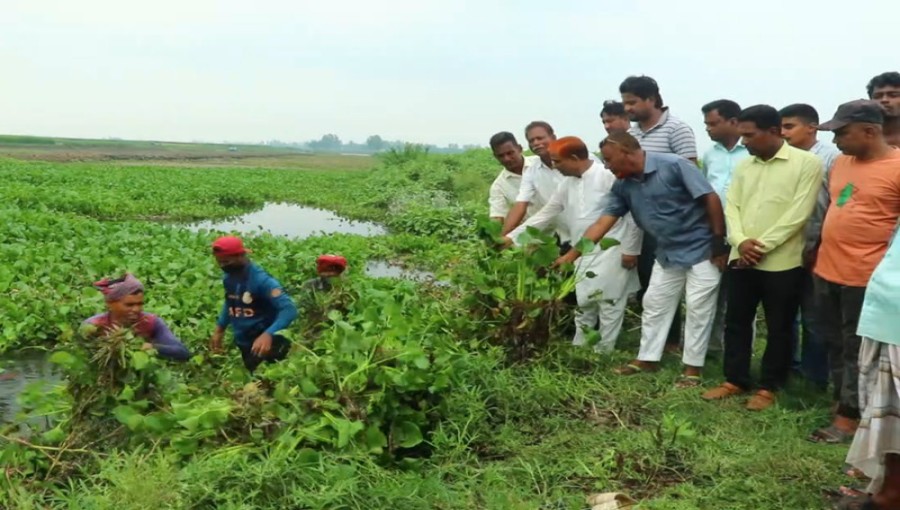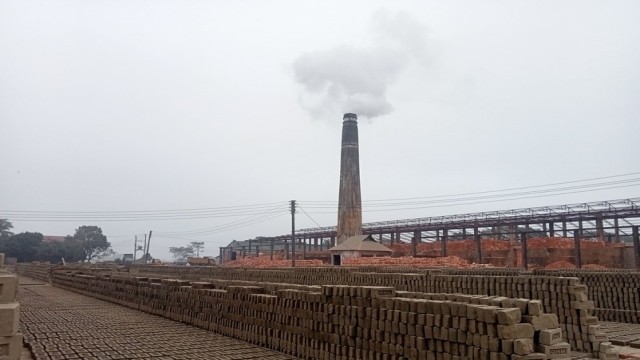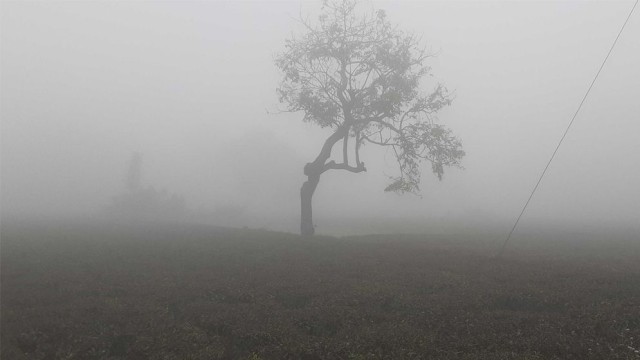In Sujanagar Upazila of Pabna, Bangladesh, a significant initiative has been launched to address the persistent issue of water hyacinth infestation in the historic Gajnar Beel.
Pabna June 9,(V7N)- Gajnar Beel, located in Sujanagar Upazila of Pabna, is a significant water body with a rich history and considerable agricultural importance. Here is a detailed historical overview:
Geographical and Cultural Significance Gajnar Beel is one of the largest wetlands in the region, playing a vital role in the local ecosystem and the livelihoods of the surrounding communities. The beel (wetland) is renowned for its biodiversity and has been a crucial water source for irrigation, fishing, and other agricultural activities.
The history of Gajnar Beel dates back to ancient times when the area was primarily inhabited by agrarian communities. During the colonial period, particularly under British rule, the beel was recognized for its fertile lands and abundant water resources, which supported extensive rice cultivation. The British administration often utilized such wetlands for irrigation projects to boost agricultural productivity.
Environmental and Economic Importance Biodiversity Gajnar Beel hosts a wide variety of flora and fauna, including numerous fish species, migratory birds, and aquatic plants. The biodiversity of the beel contributes to its ecological balance and supports the livelihood of local fishermen and farmers.
The beel's water is essential for irrigating thousands of hectares of farmland, particularly during the dry season. Crops like rice, onions, and various vegetables depend heavily on the water from Gajnar Beel. The wetland also helps in maintaining soil moisture and fertility, which are crucial for high crop yields.
In recent years, Gajnar Beel has faced significant challenges due to the overgrowth of water hyacinth, an invasive aquatic plant that obstructs waterways, reduces water quality, and hampers fishing and irrigation activities. The dense mats of water hyacinth prevent sunlight from reaching aquatic plants and reduce the oxygen levels in the water, negatively impacting fish populations and other aquatic life.
Recognizing these challenges, local authorities and community leaders have undertaken various initiatives to manage and preserve Gajnar Beel. The recent inauguration of the water hyacinth removal program, funded by the TR (Test Relief) program, is a crucial step in addressing these issues. The removal of water hyacinth is expected to restore the beel's ecological balance and improve the water flow, benefiting thousands of farmers by preventing waterlogging during crucial agricultural seasons.
Gajnar Beel remains a vital natural resource for the Sujanagar Upazila in Pabna. Its historical significance, environmental value, and economic importance cannot be overstated. Ongoing efforts to manage and preserve the beel, such as the recent water hyacinth removal program, are essential for sustaining the livelihoods of the local communities and ensuring the long-term health of this critical wetland.
END/V7N/SRP/DK/































Comment: